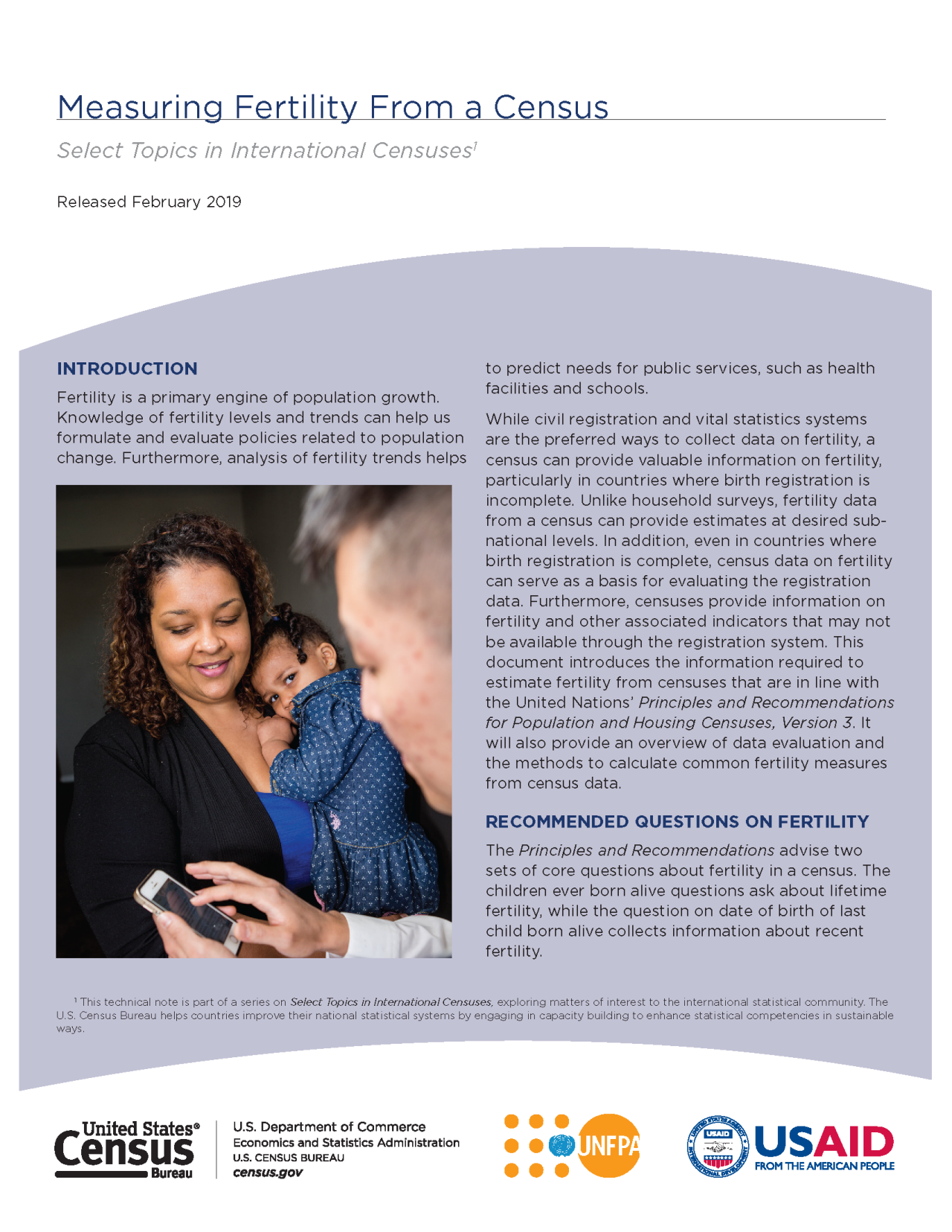Measuring Fertility in a Census
Measuring Fertility in a Census
Introduction
Fertility is a primary engine of population growth. Knowledge of fertility levels and trends can help us formulate and evaluate policies related to population change. Furthermore, analysis of fertility trends helps to predict needs for public services, such as health facilities and schools.
While civil registration and vital statistics systems are the preferred ways to collect data on fertility, a census can provide valuable information on fertility, particularly in countries where birth registration is incomplete. Unlike household surveys, fertility data from a census can provide estimates at desired sub-national levels. In addition, even in countries where birth registration is complete, census data on fertility can serve as a basis for evaluating the registration data. Furthermore, censuses provide information on fertility and other associated indicators that may not be available through the registration system. This document introduces the information required to estimate fertility from censuses that are in line with the United Nations’ Principles and Recommendations for Population and Housing Censuses, Version 3. It will also provide an overview of data evaluation and the methods to calculate common fertility measures from census data.
- This technical note is available in English, French, Russian, Spanish, and Arabic.





